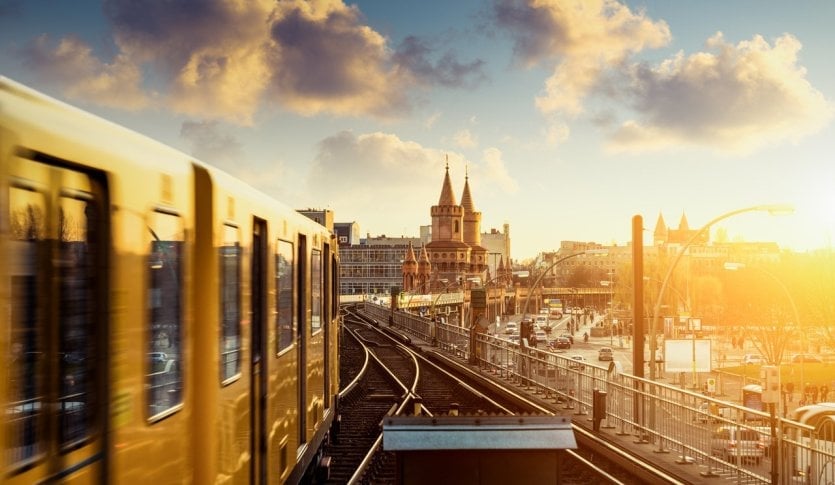
Europe's third most-visited city, Germany's capital of 3.5 million inhabitants is in constant transformation. After the fall of the Wall in 1989, Berlin, a captivating cosmopolitan city, regained its role as the political capital of a reunited Germany. The city has also established itself as Europe's arty benchmark. East Berlin exudes a unique effervescence , where concepts are made and unmade. A vibrant city that remains a first-rate historical destination . From Museum Island to the Brandenburg Gate, not forgetting places of remembrance such as the Holocaust Memorial, Berlin is at once creative, modern and steeped in history.
1. Brandenburg Gate(Brandenburger Tor)
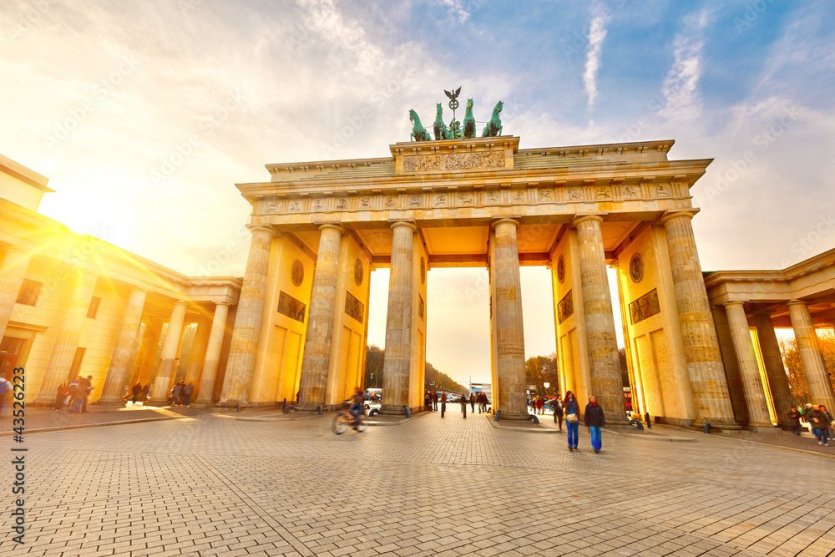
Berlin's most emblematic and most-visited landmark! Built between 1788 and 1791, the Brandenburg Gate is the last surviving of Berlin's 18 gates. Located in the former West Berlin, its neoclassical architecture was inspired by the Propylaea on the Acropolis in Athens. The King of Prussia, Friedrich Wilhelm II, was looking for the ideal architecture to enhance the Unter den Linden avenue. At the top of the building stands the quadriga, a representation of the goddess of Victory. During the Cold War, the Brandenburg Gate symbolized the division of the city. Visitors to the west would hoist themselves onto the platform to look across the Iron Curtain. Today, the Brandenburg Gate stands for the country's reunification. A symbol so powerful that it even appears on German 10, 20 and 50 cent coins.
Discover Berlin on a multi-stopbus tour you can book right here, taking in the city's must-see sights, including the Brandenburg Gate.
2. The Holocaust Memorial
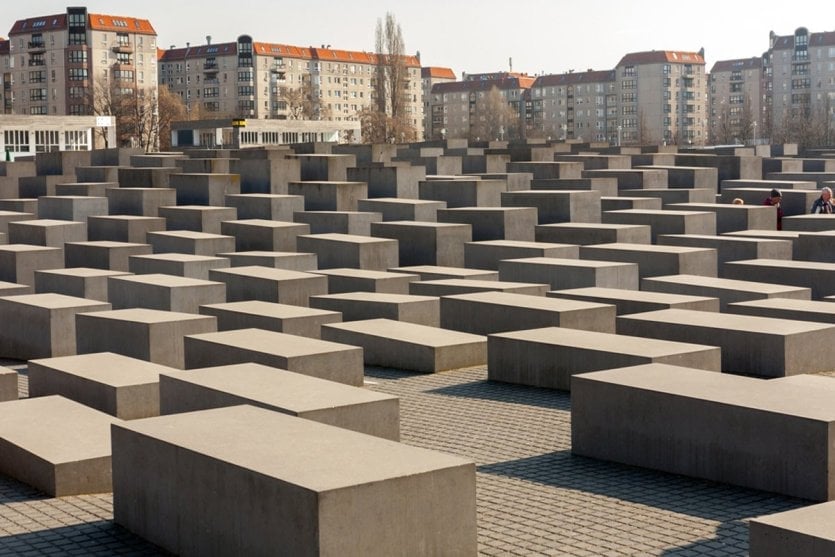
In the Mitte district, not far from the Brandenburg Gate, stands the Memorial to the Murdered Jews of Europe. This complex is dedicated to the Jewish victims of the genocide perpetrated by the Nazis: the Shoah. Designed by architect Peter Eisenmann, the Holocaust Memorial was inaugurated in 2005. Covering an area of 19,000m2, 2,711 steles have been erected on the site of Goebbels' bunker. These large concrete blocks are both an immense cemetery and a labyrinth, symbolizing the sadness and anguish of the Jewish people. The steles are all different sizes, and the ground is deliberately uneven. The deeper visitors go into the Memorial, the more austere and sombre the atmosphere becomes. This is Germany's commitment to remembrance.
3. Museum Island, a must-see in Berlin
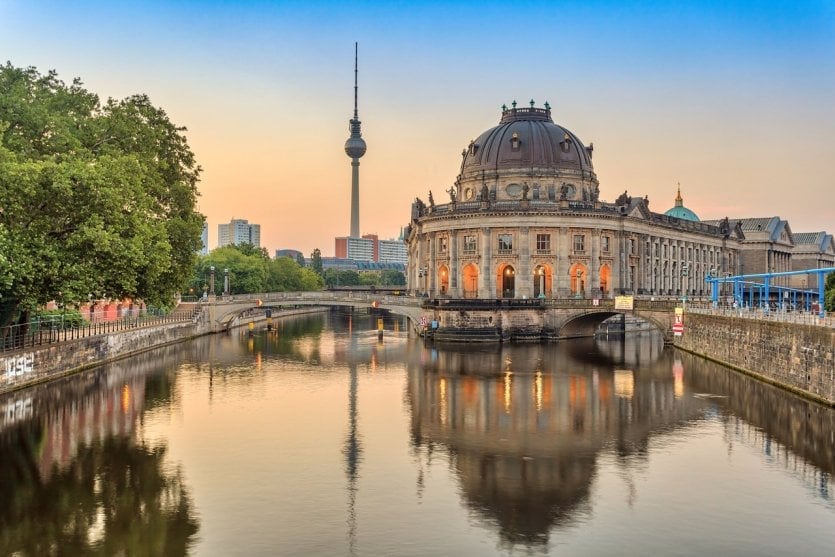
Berlin is one of Europe's top destinations for a weekend away with friends, and culture lovers will find plenty to satisfy their cravings with five museums on a single island! A Unesco World Heritage site, Museum Island was built between 1824 and 1930. On this small island in the River Spree, you'll find the world-famous Pergamonmuseum, the Neues Museum with its Nefertiti Bust, and the Bode Museum. It's all there for you to see! Most of the works come from the private collections of the Prussian royal family. Every year, the Pergamonmuseum attracts over a million visitors from all over the world. They come to admire the Great Altar of Pergamon, the Market Gate of Miletus and the Gate of Ishtar. Unesco defines the island as "an outstanding example, in a central urban environment, of the Enlightenment ideal of making art accessible to the greatest number of people".
4. Alexanderplatz
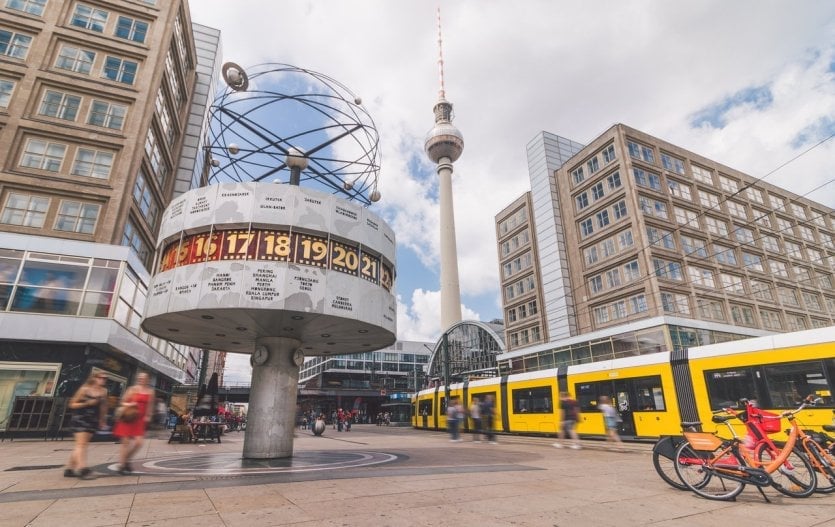
In the 17th century, Alexanderplatz was first a cattle market, then a wool market, called Oschenmarkt. In 1805, during the visit of Tsar Alexander I, the market was renamed Alexanderplatz. Alex" for Berliners, was the center of the former East Berlin, showcase of the GDR communist regime. Today, this immense square is the city's nerve center. Metro, bus, streetcar... all transport links pass through the Alex. Home to Berlin's largest shopping mall, the Alexa, it is also famous for its monuments, emblems of the socialist aesthetic.
5. Charlottenburg Palace
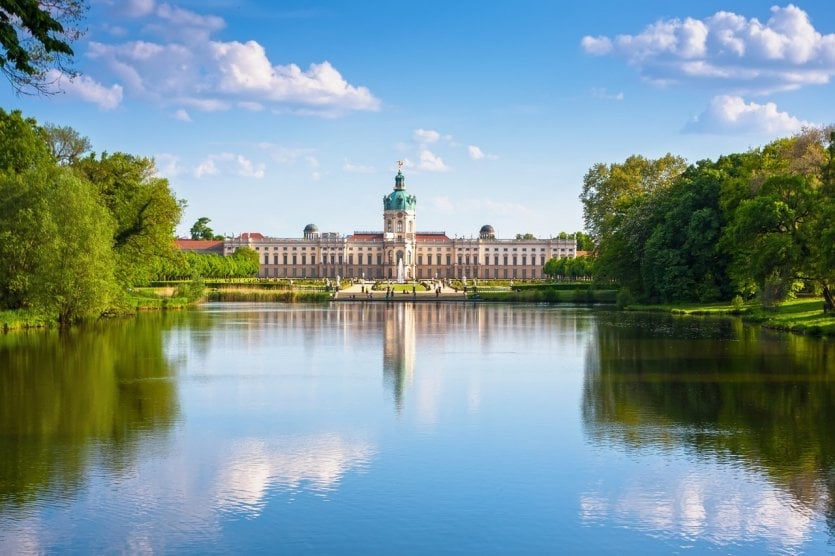
Berlin's largest and most beautiful residence. Built in the late 17th century by Frederick III,Charlottenburg Palace was originally the summer residence of Sophie-Charlotte of Hanover. When he became King of Prussia, Frederick I decided to enlarge the castle. After his wife's death, the castle was renamed Charlottenburg. Every generation has modified the castle to suit their own tastes. Inside, the old wing, the oldest in the castle, contains the bedrooms of Sophie-Charlotte and Frederick I. The new wing houses Frederick the Great's collection of paintings, and the Shinkel Pavilion hosts temporary exhibitions of contemporary art. A visit to Charlottenburg Palace also includes a detour through its English garden. Thisprivate guided tour of Charlottenburg Palace will take you through the old palace and the new wing with a private guide to discover vast collections of weapons, works of art and much more.
6. Gendarmenmarkt, Berlin's most beautiful square
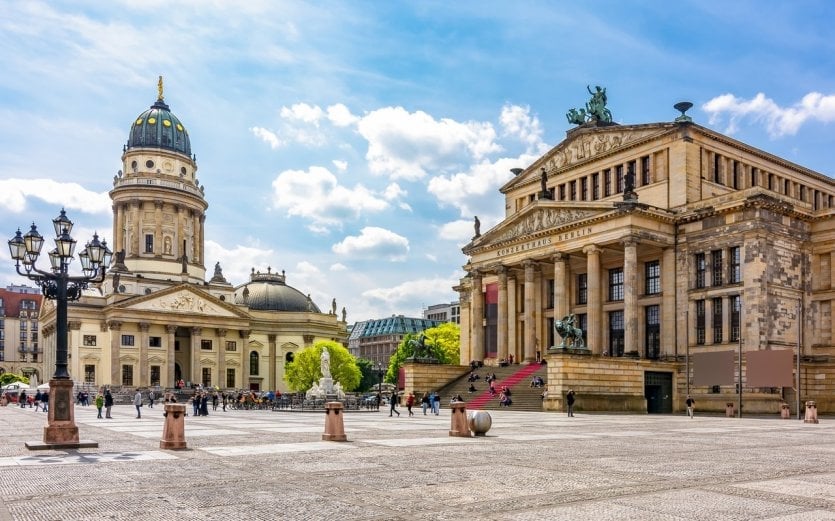
This is without doubt the capital's most beautiful square. Renowned for its old Berlin atmosphere, Gendarmenmarkt offers visitors a glimpse of the city at the time of the Prussian kings. The square was created in 1700. King Frederick I wanted a district for the expelled French Protestants. Its name "les gens d'armes" comes from the cuirassier regiment established on the square. Appreciated for its architectural richness, Gendarmenmarkt is famous for its two cathedrals. One is German: Deutscher Dom. The other French: Franzosischer Dom. Another incredible monument is the Konzerthaus, Berlin's iconic concert hall. At the center of the square stands a statue of the great poet Friedrich Schiller.
7. Potsdamer Platz
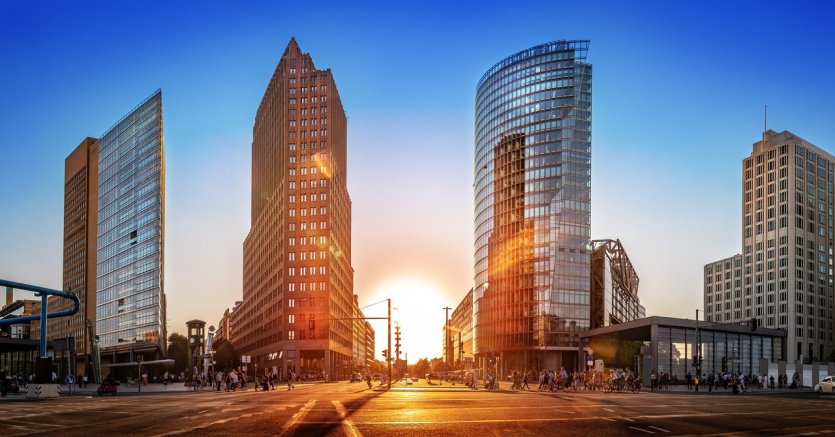
It's the image of urban renewal that's transforming Berlin! Long before the Cold War, Potsdamer Platz was one of Europe's most important focal points. During the Second World War, the square fell victim to intensive bombing. Located in the middle of the demarcation between East and West Berlin, Potsdamer Platz was a kind of no-man's-land, designed to discourage escape to West Germany. Since the fall of the Wall, many initiatives have been undertaken to bring this historic square back to life. Today, it's like a parallel city. On one side, the Sony Center; on the other, Marlene Dietrich Platz. The 68,000m2 city appears surreal. Everything was built using special materials, in coppery hues, specially designed for the square. Its construction made it the largest building site in Europe.
8. East Side Gallery, a piece of the former Berlin Wall
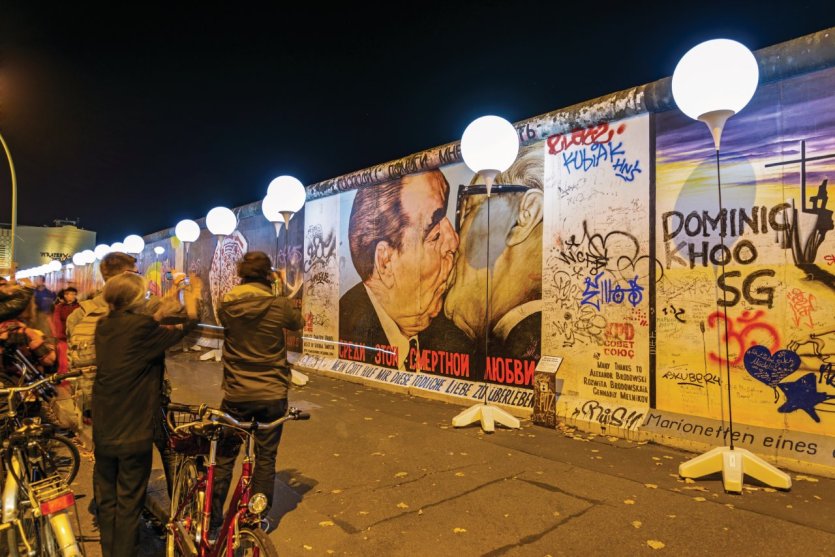
A must-see in Berlin, especially for first-time visitors. A veritable open-air museum, East Side Gallery is none other thana piece of the former Berlin Wall, still standing. Located in the former East Berlin, along Mühlenstrasse, it is the world's largest open-air art gallery. Over 1.3 km in length, it features more than a hundred paintings. When the Wall came down in 1989, artists from all over the world came to immortalize the fall of the Soviet regime. The paintings were already the star attraction of the western wall, but now the rest of the block is dressed in a thousand colors. Some of the works are very well known, such as Dmitri Vrubel's Kiss of Friendship between Enick Honecker and Leonid Brezhnev, or Birgit Kinder's Trabant . The paintings reflect Berlin's bohemian personality, a kind of surrealist imagery, pacifist declarations and political messages.
9. Reichstag Palace
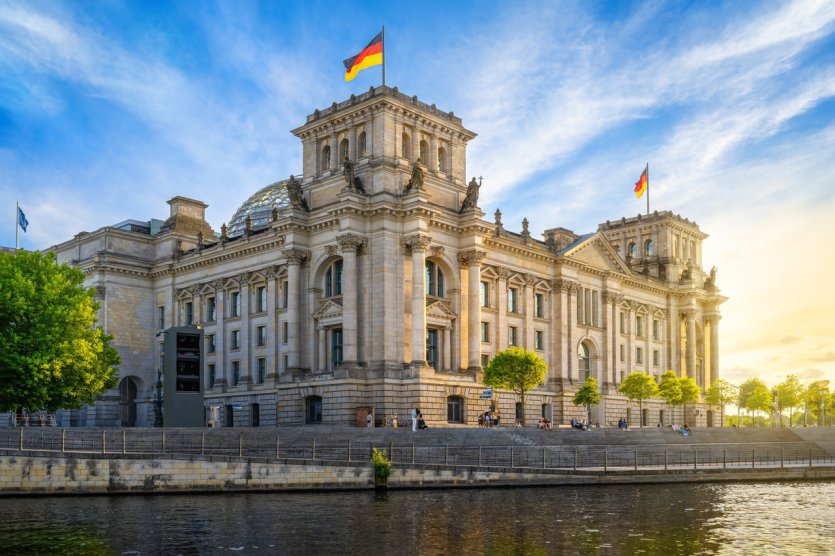
Built between 1884 and 1894, the Reichstag Palace was the seat of the Reich (Assembly) during the Second Empire. Built in the style of the great Italian Renaissance, the building was partially destroyed by fire in 1933, exactly one month after the beginning of the Third Reich. During the Second World War, the palace was totally destroyed by bombing. It was not until 1970 that it was completely restored. The Reichstag was completely transformed, and the original dome was rebuilt, this time in a more modern style. The central cone brings light into the session rooms. The glass roof also symbolizes the transparency of the assembly. The motto inscribed on the front of the palace emphasizes the importance of the nation: " Dem Deutschen Volke " (To the German people). The Reichstag Palace is open to visitors, who can enjoy an exceptional view of the capital from the top of the dome.
We recommend thatyou book your visit to the Reichstag here , to discover the interior of the building and its history before visiting the plenary chamber and the Reichstag dome.
10. The Memorial Church, Berlin's peace memorial
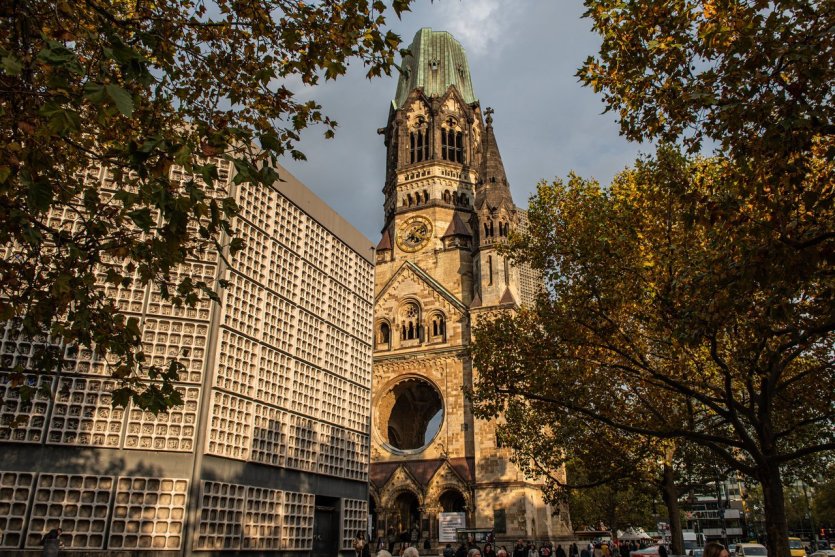
A symbolic center of West Berlin, theMemorial Church stands as a memorial to peace and reconciliation . Built between 1891 and 1895 in memory of Kaiser Wilhelm I, the church was destroyed in 1945 by aerial bombardment in April. It was not until 1956 that the church was renovated. A new, all-glass consolidation was built. Composed of 20,000 blocks of blue glass, Berliners call it the "Poudrier" The interior is just as surprising. In the center, a golden Christ floats above the altar. The Church of Remembrance contains a Russian Orthodox cross and the famous Stalingrad Madonna, created by Kurt Reuber in 1942. With its gutted silhouette, this church is a symbol of Berlin's heavy past and the city's duty to remember.
11. Botanischer Garten
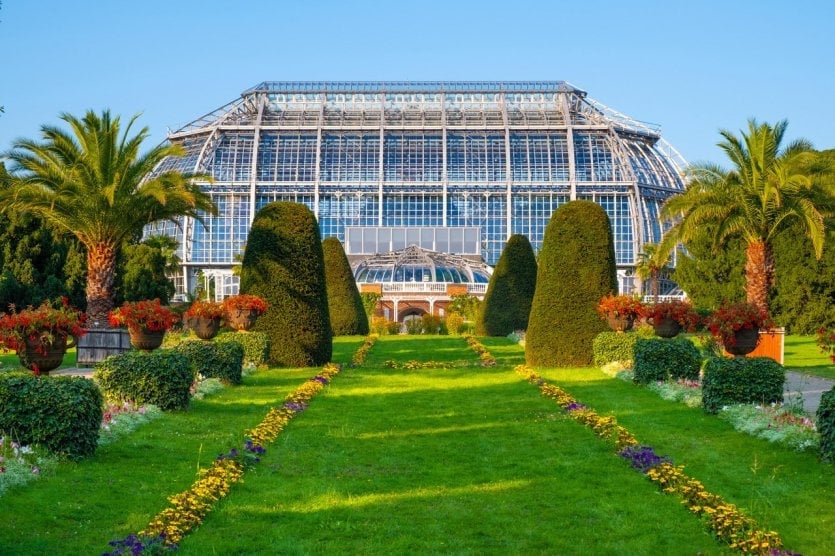
Just south of Berlin, the Botanischer Garten is a bucolic paradise that has been in existence for over 300 years. Today, no fewer than 20,000 species of flowers can be seen growing and flourishing in the garden. Most impressive of all are the enormous greenhouses that house and condition exotic plants and flowers. So, if the hot, humid Amazonian climate doesn't scare you, make a detour to the Viktoriahaus where you can admire the royal Amazonian water roses, while pragmatists can admire and learn about the medicinal uses of plants. In the garden, don't miss the large rock gardens covered with European plants or the Japanese garden with its charming pavilion and beautiful rhododendrons. Fossils show the evolution of plants through the ages, and you can also see plants found in Egyptian and Roman tombs, and other plants and curiosities from all over the world and all ages.
12. Badeschiff, a must-see in Berlin
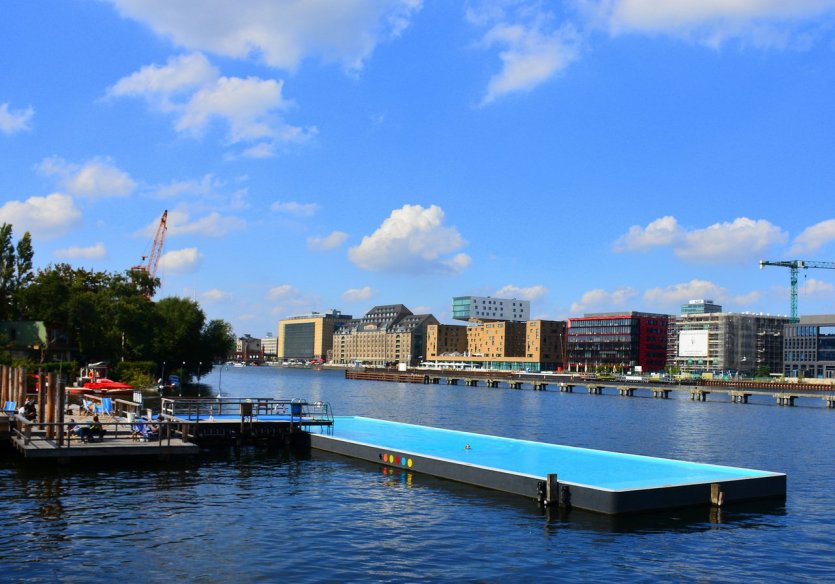
The Badeschiff is certainly one of Europe's most original swimming pools . Set between the warehouses of a former railway station, the Badeschiff pool is located at the end of a barge and opens directly onto the Spree. This gives bathers the impression of swimming in the river, while enjoying clean, purified water! In summer, you can take a dip here, before lounging on a deckchair on the small sandy beach, sipping cocktails and gazing out over the beautiful cityscape on a sunny day.
13. The Fernsehturm
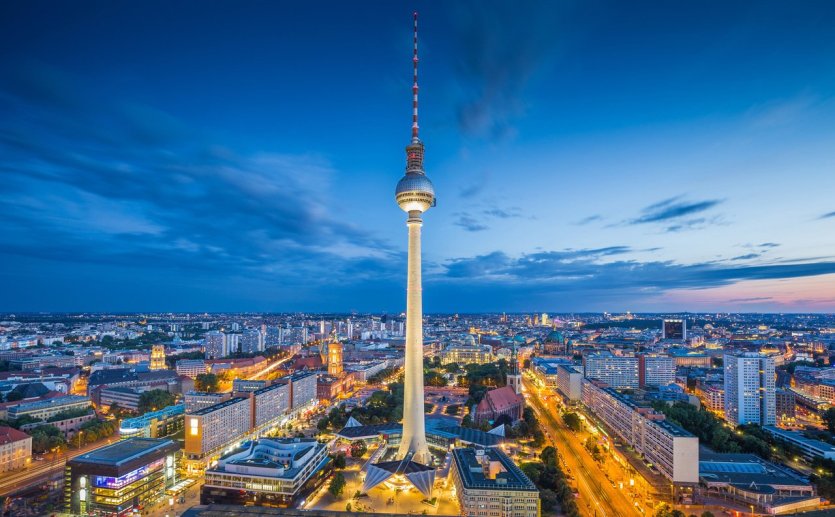
What is that gigantic tower that dominates the Berlin skyline? The Fernsehturm is nothing other than the television tower . Built in the late 1960s, it stands 365 m tall and is a symbol of communism. Visible for many kilometers, it's a handy landmark when you're lost in Berlin, and today it's hard to imagine the city's skyline without this iconic Fernsehturm. The must-do is to climb to the top (well, almost, since the observation platform is 203 m high). You can enjoy a coffee or dinner in the restaurant, which rotates on itself, while admiring a 360-degree view of the city.
Take advantage an all-inclusive ticket for priority entrance to this German capital must-see, with no waiting, by click here.
14. Checkpoint Charlie
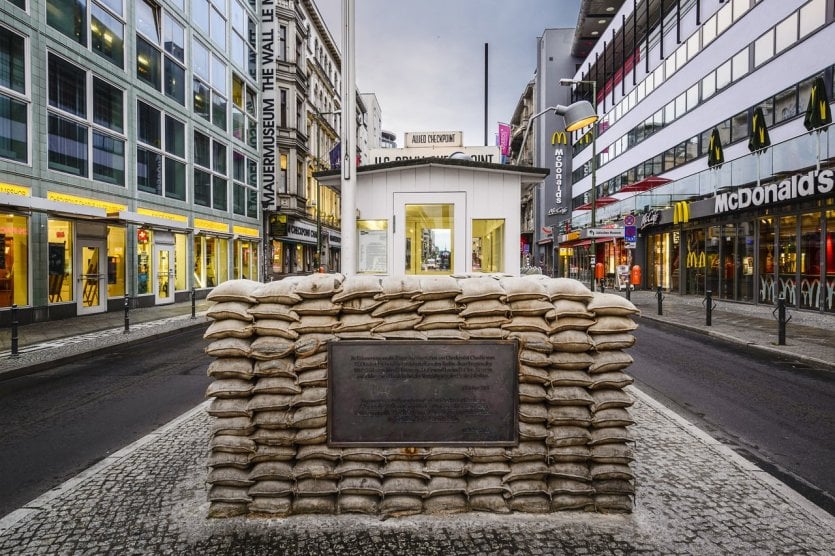
A symbol of Berlin's division into Russian and American sectors, the famous Checkpoint Charlie, a link between East and West in the heart of the city, with its famous sign stating in every language that "you are leaving the American sector", has now become a tourist attraction. It is now possible to have one's photograph taken alongside fake soldiers. Paying tribute to the thousands of individuals and families separated by the Wall, the Haus am Checkpoint Charlie museum remains a very interesting place to visit. It retraces the history of the Cold War and the construction of the Wall, based on numerous testimonies from the period and featuring the testimonies of dozens of people who fled or tried to flee the GDR. You'll also be able to see many authentic documents and objects. If you'd like to save on the entrance fee, you'll find plenty of information panels (in English and German) in the various places in the city marked by the presence of the Wall, such as the memorial on Bernauer Straße or next to Topographie des Terrors, for example.
Book your guided tourticket for the Haus am Checkpoint Charlie museumhere , and take advantage of our partner's special rates.
15. Mauerpark, an essential part of Berlin life
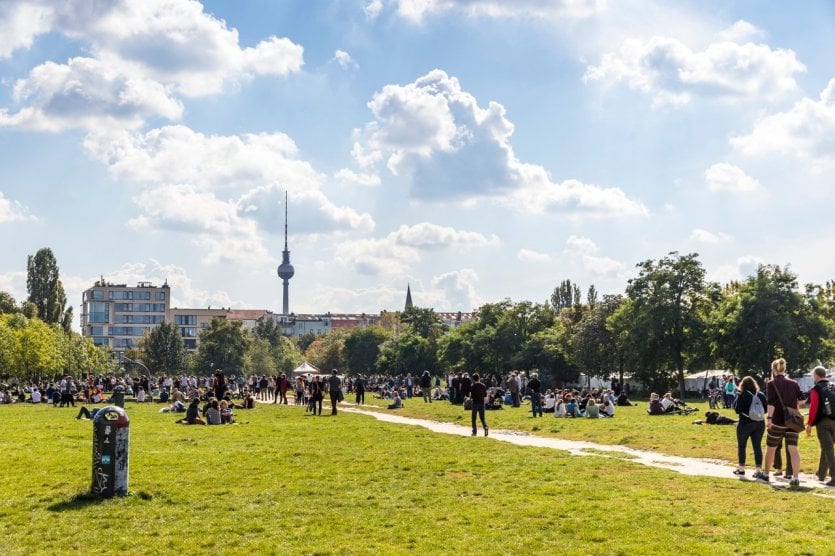
A park unlike any other with, admittedly, little greenery, but that's really not why you go there. Mauerpark is a must-see if you want to get a feel for Berlin. This large green space is a meeting point for artists (graffiti artists, in particular, express themselves on a very large wall reserved for them), but also for young people and families who come here for picnics. On Sundays, it's a hive of activity when Berlin's largest flea market sets up shop. You'll find treasures resold at good prices by local residents. You'll also appreciate the variety of food-trucks, the all-day concerts (all styles of music) and, in summer, the giant free open-air karaoke from 2pm onwards, which gathers hundreds of spectators in a stone amphitheatre in a happy, relaxed atmosphere. It's the ideal place for a relaxing Sunday if you're spending the weekend in Berlin for an EVG, for example.
16. Tiergarten Park, Berlin's green lung
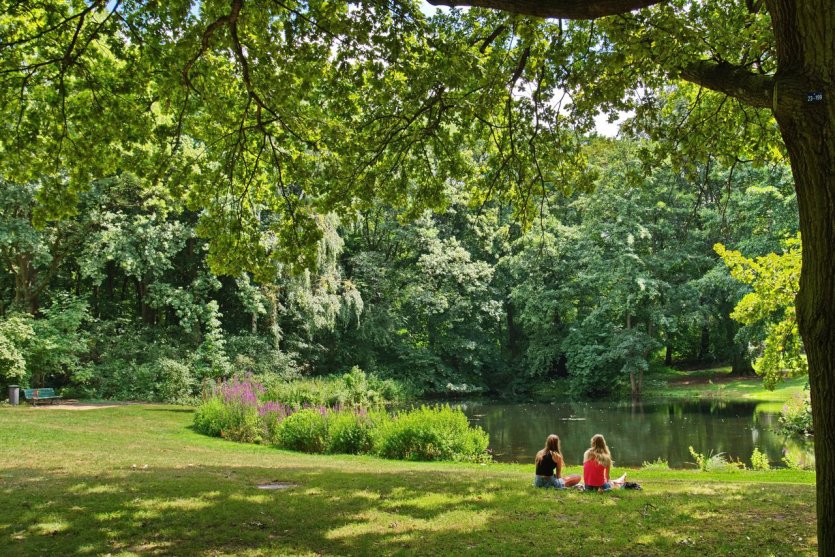
A veritable forest in the heart of Berlin, Tiergarten Park covers 210 hectares in the heart of the city, from Charlottenburg to Mitte. It's the ideal place to recharge your batteries, stroll in the sun or shade and cycle in the company of Berliners. Tiergarten is criss-crossed by long avenues where concerts and flea markets are held every weekend. The park is also home to the memorial to homosexuals persecuted during the Nazi era. Don't miss the Schloss Bellevue, where the President of the Federal Republic lives and works, and finish your walk with a drink at the Café am Neuen See. Yes, there's a reason why Berlin features in our top 10 best cities to study in Europe: despite its status as a sprawling capital, it offers a relaxed, laid-back lifestyle.
17. The Friedrichstadtpalast
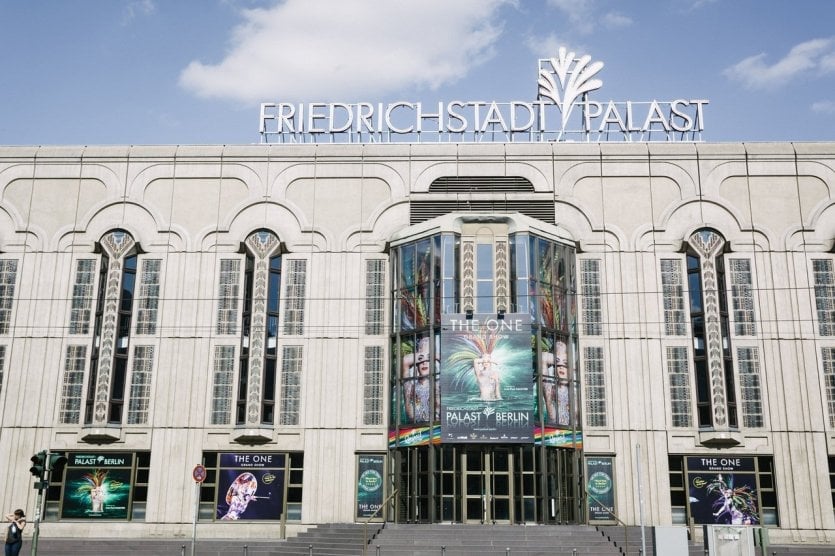
The Friedrichstadtpalast is one of Germany's busiest stages, and the world's largest theater stage, with a surface area of 2,854m2! Built in 1984, the Friedrichstadtpalast is at the cutting edge of technology and offers top-notch performances. You don't need to understand German to attend, as the shows are mainly visual (dance, circus, acrobatics, etc.) and successfully adapt traditional 1920s themes to a modern, Las Vegas-style sauce, with lots of feathers and special effects. Shows at the Friedrichstadtpalast attract large numbers of German and international tourists.
18. Kurfürstendamm, shopping and Berlin souvenirs
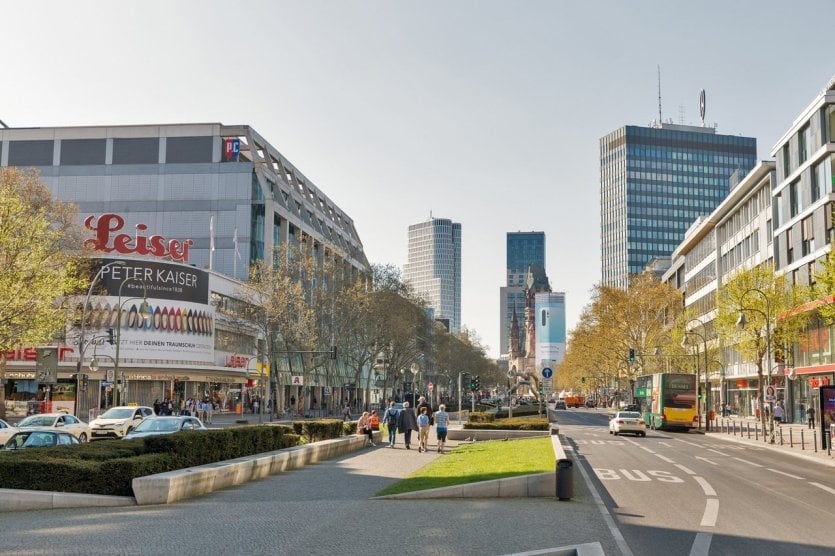
Kurfürstendamm is a bit like Berlin's Champs-Élysées . The 3.5 km-long avenue linking Breitscheidplatz to the Grunewald district alternates between luxury boutiques, restaurants, palaces and theaters. Day and night, this avenue attracts many visitors. The Kurfürstendamm is particularly worth a visit for its Church of Remembrance, a masterpiece of neo-Romanesque architecture, which was bombed during the Second World War and has survived intact.
19. Visit the Pergamon Museum
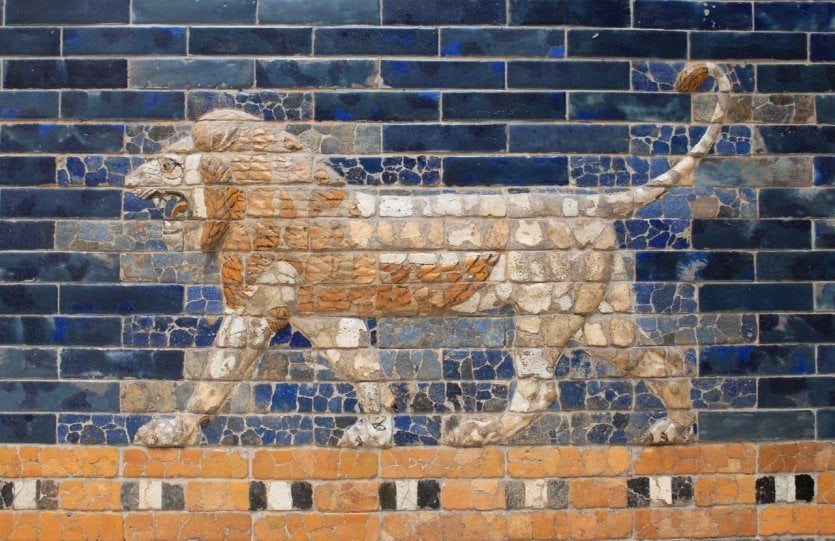
Housed in a monumental replica of the Pergamon altar and founded in 1930 following excavations in Olympia, Pergamon, Samos and other ancient sites, the Pergamonmuseum is now considered one of the world's leading archaeological museums.
Its unique collection of Islamic and Middle Eastern art is impressive. Highlights include the Ishtar Gate (one of the eight gates to the city of Babylon) and the façade of the Palace of Mshatta. The Near Eastern Art Collection (Vorderasiatisches Museum) features numerous pieces brought back by German archaeologists, notably from Syria, Turkey and Iraq: together with the Louvre and the British Museum, it now boasts the most important collection of art from the Middle East. Another room is devoted entirely to Babylon. Here you'll find more information on this mythical city, as well as numerous documents, jewelry and handicrafts. In the center of the room, a detailed model gives an idea of the topography of the legendary city.
We recommend that you book your ticket to the Pergamon Museum here before your visit.
And not forgetting... Go for a currywurst!
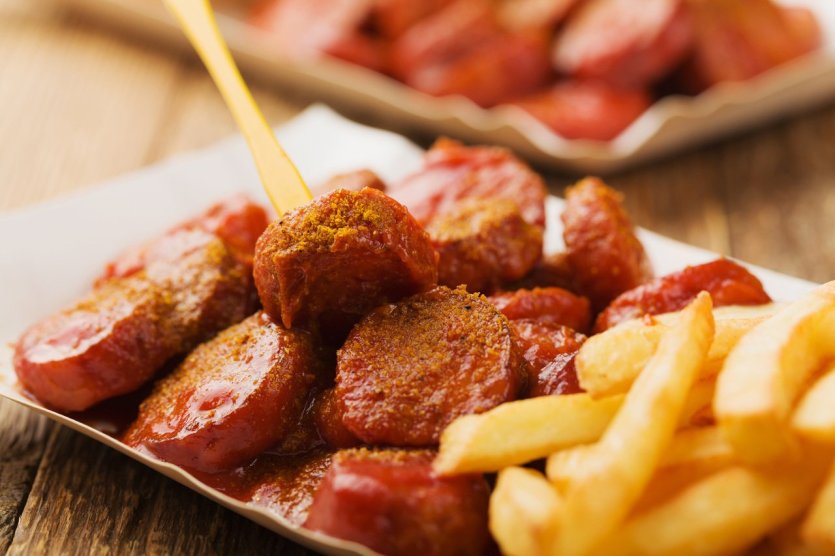
Currywurst is the Berlin specialty par excellence. This sausage covered in ketchup and curry and served with mayonnaise fries might seem indigestible, but it's delicious! You'll find imbiss everywhere in Berlin, especially at the foot of subway stations. And if your passion for this sausage gets the better of you, there's even a museum dedicated to currywurst in Mitte. As you wander down its kitschy aisles, you'll learn all about the history of this dish, and as soon as you leave, you'll want to grab your first imbiss !
Where to stay in Berlin?
Berlin is a dynamic city with many interesting neighborhoods where you can find accommodation to suit your preferences and budget. Berlin's central district is Mitte, where you'll find plenty of accommodation options, making it an excellent choice if you want to be close to the action. Kreuzberg is a bohemian, artistic district of Berlin, known for its lively nightlife and colorful graffiti. It's an ideal place for travelers looking for a creative atmosphere. Prenzlauer Berg is renowned for its tree-lined streets, friendly cafés, vintage boutiques and family atmosphere. It's a popular choice for families and travelers in search of tranquility. Friedrichshain is a trendy district with a lively nightlife, bars, clubs and restaurants.
Here are our three favorite establishments:
- Best located
The Meininger Hotel Berlin Mitte is an excellent value hotel in the historic heart of Berlin. The friendly staff will be happy to help you explore the city. Click here to book a room!
- The most original
The Eastern Comfort Hostel Boat is a hotel located in a former ocean liner moored on the Spree at Warschauer Straße. Just like a real cruise, you can choose between first and second class! Click here to to book your stay!
- The chicest
The Nhow is a chic hotel with futuristic lines that you can book in just a few clicks here, with a beautiful view of the Spree, an ultra-modern spa and bar in a breathtaking building. You'll sleep in comfortable rooms and enjoy a breathtaking view!
Discover here the full list of our favorite hotels in Berlin!
What unusual things can you do in Berlin?
For some years now, Berlin has been THE fashionable capital. Its nightlife attracts young people from all over Europe. Arm aber Sexy, poor but sexy, the slogan coined by former mayor Klaus Wowereit, Berlin doesn't necessarily shine for its architecture or the cleanliness of its streets, but rather for its relaxed, young and lively atmosphere. Berlin has many hidden treasures and unusual places to visit, not least the Reichstag, East Side Gallery and Brandenburg Gate. Discover here our top 10 unusual places to see in Berlin, places that reflect the city's rebellious image and its fight against rampant gentrification.
What can young people do in Berlin?
Berlin is a dynamic and culturally diverse city with many exciting activities for young people. Take advantage of your stay in Berlin to visit museums and art galleries such as the Museum Island (Museumsinsel), the Museum of Contemporary Art Berlin (Hamburger Bahnhof) and the East Side Gallery, which features pieces of the Berlin Wall covered in art. Berlin is also famous for its lively nightlife. The districts of Kreuzberg, Friedrichshain and Mitte are famous for their bars, clubs and discos, where you can also enjoy legendary techno nights . Enjoy Berlin's parks and green spaces, such as Tiergarten, Volkspark Friedrichshain and Mauerpark. They're ideal for picnics, sports or just relaxing with friends over an aperitif.
How to visit Berlin in 1 day?
Visiting Berlin in one day is a challenge, as the city is packed with historical and cultural sites and attractions. However, if you have a full day, here's a suggested itinerary to make the most of your whirlwind visit to Berlin:
Morning: start your day by heading to the Brandenburg Gate, one of Berlin's most iconic symbols, to take photos and learn more about its history. Near the Brandenburg Gate, visit the Holocaust Memorial (Memorial to the Murdered Jews of Europe) for an emotional experience. Continue on foot to the Reichstag, Germany's parliament building. You can take a guided tour or climb the dome for a panoramic view of the city (be sure to book in advance). Lunch in a local restaurant and try dishes such as Currywurst, Schnitzel or German sausages.
Afternoon: visit Museum Island, a UNESCO World Heritage Site, home to several outstanding museums, including the Pergamon Museum and the New Museum. Choose the one that interests you most, then if you still have time, head for Checkpoint Charlie, the famous crossing point between East and West Berlin during the Cold War. There's a museum there (Checkpoint Charlie Wall Museum) that recalls this historic period. Bear in mind that this program covers only a small part of what Berlin has to offer, so it's best to spend more time in the city if possible.
How can I visit Berlin in 3 days?
If you're lucky enough to spend a second and third day in Berlin, you can explore more of the city and discover other interesting attractions.
For your second day in Berlin:
Morning: visit the DDR Museum to learn about everyday life in East Germany during the time of the German Democratic Republic, then head to the East Side Gallery, the longest remaining section of the Berlin Wall, where you can admire the many colorful and meaningful murals.
Afternoon: visit Charlottenburg Palace, a magnificent Baroque palace surrounded by gardens. Explore the interior of the palace and stroll through the gardens. Afterwards, visit the magnificent Berlin Cathedral, located near Museum Island. You can also climb up to the dome for a panoramic view.
For your third day in Berlin:
Morning: visit the Gemäldegalerie, an art gallery housing an impressive collection of European paintings, including works by masters such as Rembrandt, Botticelli and Vermeer.
Afternoon: visit the Berlin-Hohenschönhausen Memorial, a former Stasi prison, to learn more about the GDR period and the activities of the former East German secret police. If you're interested in Jewish history, visit Berlin's Jewish Museum to discover its unique architecture and exhibition on Jewish history in Germany.
End the day by climbing the Fernsehturm, Berlin's famous television tower, for a panoramic view of the city lit up at night (make sure to book in advance).
If you visit Berlin on a Sunday, don't miss the Mauerpark flea market, where you can pick up vintage items, listen to live music and enjoy the lively atmosphere.
How to visit Berlin in 4 days?
If you have the opportunity to spend a fourth day in Berlin, you can further deepen your discovery of the city by exploring additional neighborhoods and attractions. Here's an itinerary for your fourth day in Berlin:
Morning: explore the DDR Museum to learn more about daily life in the East German era in an interactive and immersive way.
Afternoon: visit the Prenzlauer Berg district, known for its bohemian atmosphere, cafés, independent boutiques and parks. Stroll the streets, admire the architecture and enjoy the artistic ambience.
End the day with a stroll along Unter den Linden, Berlin's historic avenue, and admire iconic buildings such as the Berlin State Opera and Humboldt University.


